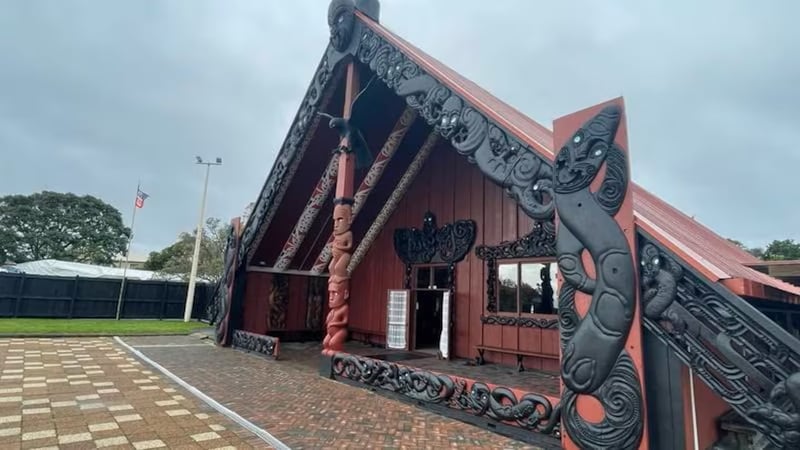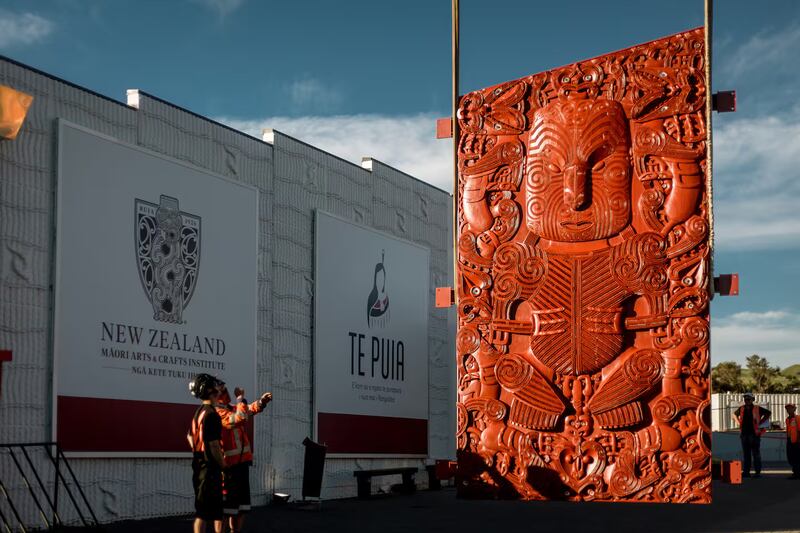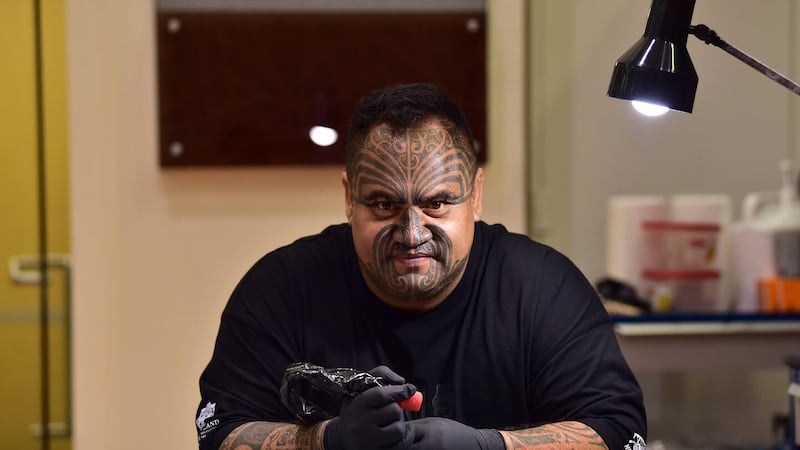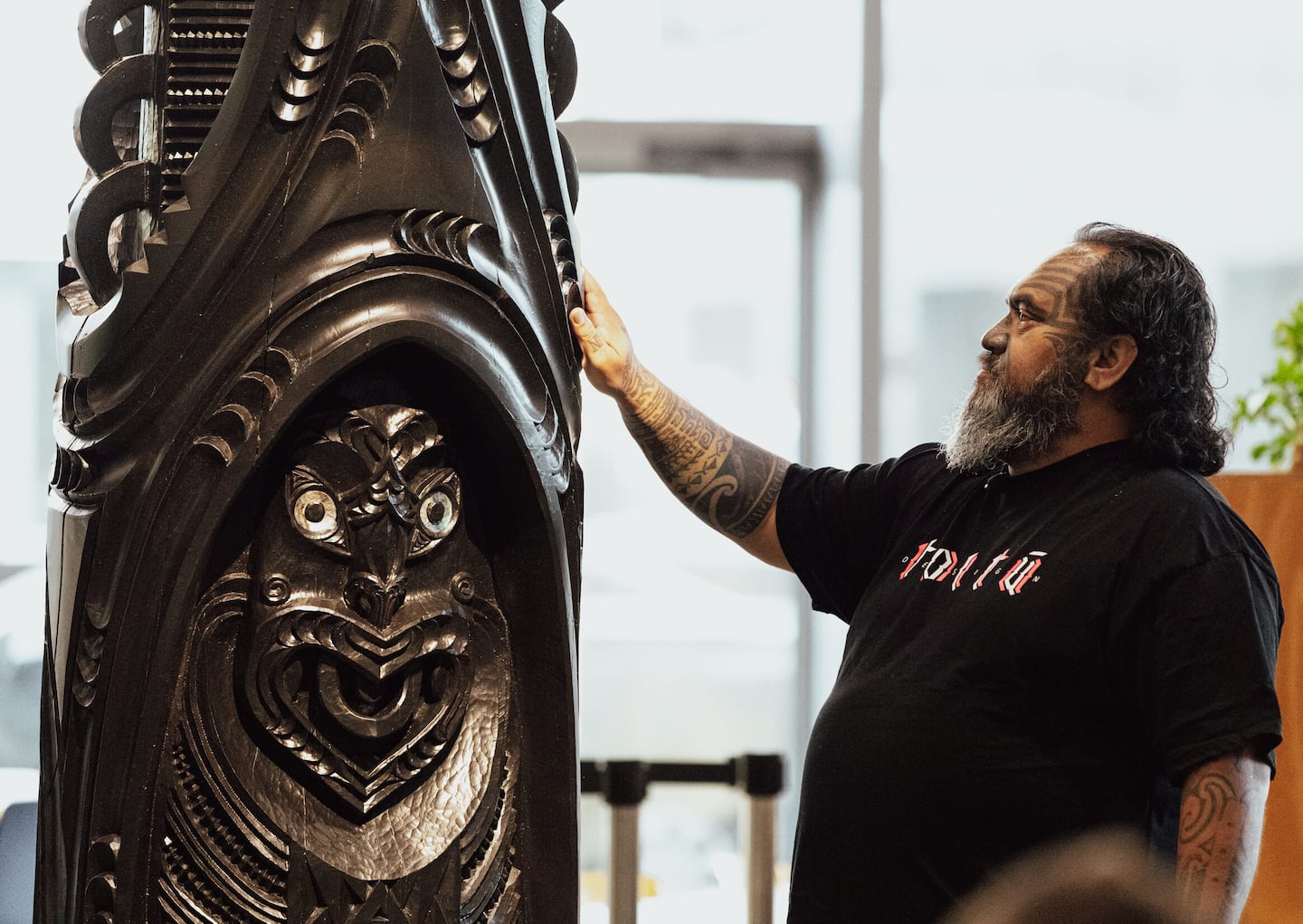It is not every day we get a first-hand account of the “making” of a master carver - the life journey of those entrusted with the ancient knowledge and traditions of our ancestors.
Arekatera Maihi (Ngāti Whātua Ōrākei, Ngāti Whātua ki Kaipara, Tainui, Te Waiohua, Ngāpuhi) made time to share his story with us. Katz, as he’s widely known, is a Tāmaki Makaurau whakairo (carving) and tā moko (traditional tattoo) artist based in Whakatāne, whose artworks include the iconic Te Ara i Whiti pink light path in central Auckland.
“The responsibilities of Māori carvers are quite high, simply because we’re maintaining some ancient art form,” Maihi has said.
He has encouraging words for rangatahi who don’t quite click with school or feel lost because he was them.
“I ended up being that kid at the back of the class drawing. And I know there’s a lot of our artistic creatives that are out there now in te ao Māori that were those kids.
“If you’re feeling lost, use your culture to pull you back in line. It worked for me.”
Maihi also has a few rays of light for wāhine Māori passionate about toi whakairo and other creative interests.
“I want to encourage all our wāhine Māori to get in there. I know from experience that their approaches are beautiful. I just want to encourage them, the creative world is open for all of us.”

‘Mana motuhake was instilled in us’
The strong sense of dispossession and loss as Ngāti Whātua Ōrākei was a major influence on Maihi growing up in Tāmaki Makaurau.
“I was born and raised in Ōrākei on Kitemoana Street, which is just below our marae. Being from Ōrākei, that whole feeling of loss - loss of land, loss of culture - you felt it because the tūturu Māori culture wasn’t really around when I was growing up in the 70s and 80s,” the 49-year-old says.
“We were taught how to defend our land, like our uncles did and my father and his cousins did at Bastion Point. That is instilled in us, to be mana motuhake, to have that understanding of what it means to be Māori.”
It’s at Ōrākei that the artist was born.
“Art for me came along at a really young age. My grandparents, they had all these encyclopedias in the house, hundreds of them. The only book I ever grabbed was the Hirini Moko Mead whakairo book [Te Toi Whakairo: The Art of Maori Carving]. It was the only book that really pulled me towards it, and yet they had Walt Disney encyclopedias. Nah, I just didn’t care.
“I just grabbed that one book, lay on the ground, grabbed the newspaper and started trying to draw.”
At the time, Ōrākei marae was being carved. That would leave a lasting impression on him.
“I would see my uncles carving. That was a big, big thing that encouraged me to follow this artistic route.”

‘There’s so much power in our culture’
After St Stephen’s College, Maihi left behind his artistic interests, ended up “working for the man” for a decade and “didn’t like it”.
“I decided nah, nah I want to go back. So I reached back into my artistic, creative ways and, yeah, it took over. Now, for the last 25 years, this is all I’ve been doing - making a living off being Maori.”
There is power in Māori culture, he says. Something not everyone understands.
“We have so many rangatahi out there that are following other cultures - and that’s cool, you know, the hip hop culture, that’s all good.
“What they maybe haven’t realised is that there’s so much power in our culture, especially for the creatives.
“Globally, I’ve been around the world, and what the world wants to see is our indigenous art forms, our cultural practices. They want to see that, they want to understand that.”
Aotearoa artist Owen Dippie painted Arekatera Maihi in New York in 2018. Source / Instagram
‘Transformed my life’
Maihi’s return to art took him to the New Zealand Māori Arts and Crafts Institute in Rotorua - encouraged by the institute’s old boys like master carvers Gordon Hatfield, Gordon Toi and others - first as a tauira and later as tumu whakairo (head of school). The experience was “transformative”, he says.
“I decided to throw my name in the hat and try and get in, because it was very hard. They only accept five people a year, there might be 30 applicants.
“That school definitely transformed my life. It gave me skills that have allowed me to do what I do for our people.
“It’s a pretty competitive place. You have to compete to get in and when you got in there - oh man, there were some guns. Between our three master carvers, there was over 120 years of experience.
“I’m proud to be an old boy, a tauira of that school. We call it our wānanga and, even though we’ve left, it’s still our school. I love that place for what it’s given me.”

‘Making a living off being Maori’
Maihi learnt to diversify his skill sets early in his career, which means he keeps himself busy not just with carving but also with design work, tā moko, consultations and other artistic mahi. He lives a “pretty flexible life”.
“I only answer to my wife, my daughter and my client. And sometimes, I don’t even answer them,” he laughs.
“People call it lucky but it’s blimmin’ hard work.”

“I come from Tāmaki which has a lot of commerce and commercial drivers. They want to have relationships with mana whenua - and they do it through art.
“I get a few projects every year. In the last six years, I’ve had at least four major projects a year.”
His assortment of mahi has run the spectrum from the Auckland light path commissioned by Auckland Transport to the video game Civilization. Each task has required varying skills, whether artistic, cultural or relationship finesse.

“The design work for Te Ara i Whiti, the big pink path, I was asked to jump on that. My role in that job was to convince people - the iwi and also the community - about the pink colour, the hot pink. That’s pretty bright and Māori will think, ‘that’s not even our colour palette!’
“I was like, yes it is actually. As a carver, I see that every day. We carve tōtara, it’s pink, it’s a pinkish colour. That encouraged the iwi to take it on.
“We came up with some ideas which sort of work. They still work and it’s still there now.”
Te Ara i Whiti light path in central Auckland includes Arekatera Maihi’s design work commissioned by Auckland Transport. Source / YouTube
Maihi designed the tā moko worn by Kupe in the video game Civilization VI: Gathering Storm.
At the time, someone had done a similar thing without consulting Māori, “And te ao Māori just shut them down,” says Maihi.
“I said, ‘whoa, okay, before we do this, we’re gonna put you through a few processes so that you understand what you’re getting yourself into with te ao Māori.”

A process was put in place that was inclusive, which involved consultation and other steps.
“It was actually supported because the artist, myself, was a traditionally trained artist that knows about moko and mataora. The iwi, the Māori people, were down with it.
“We have to make sure that we’re not just selling out. That we’re actually making our clients consider what they’re getting into: ‘Are you prepared to stand up and give your honest opinion about what you want and why you want it?’
“I always ask that. If a Pākehā organisation comes and asks me for a carving, the first thing I say is ‘Why do you want this? And what’s your contributions to te ao Māori after that?’
“It’s not just gonna be ‘pin it up and leave it there and forget about it.’”
‘You can’t tell me they didn’t do that mahi’
Maihi has involved his 10-year-old daughter in several of his projects over the years.
“I think she would have been as young as five when she was drawing stuff for me. I’d make her draw this stuff and she’d do it. Now she’s a bit more ‘kick-backy’, she’s growing up.”
Maihi says wāhine Māori are amazing artists and are across every creative field, including carving.
“For any of our wāhine out there, there’s so many opportunities for all the wāhine to do their mahi.
“When I say ‘their mahi’, I mean far out: We have female carvers, female moko artists, female waka builders. We have female designers, female architects, female creatives. The creative hub is huge, it’s not just what I do.
“I want to encourage everyone, all our wāhine Māori to get in there. I know from experience, that they do it with so much less ego than the brothers. Their approaches are beautiful. I just want to encourage them, the creative world is open for all of us - carving as well.”
It’s important not to get swept up in thinking wāhine Māori weren’t involved in some traditional practices, he says.
“We’ve got that white-washed mentality that ‘nah, nah, nah, women never carved the canoes’. I’ve seen photos of old kuia with work boots on, and those work pants that the old men used to wear, in the hull of the waka. You can’t tell me they didn’t do that mahi. Even my mates that build the waka have said that.
“I’ve actually got a close friend that’s a waka builder and she is mean. She’ll smoke me. That’s encouraging I think for our wāhine.”
Maihi says te ao Māori has a special beauty.
“Even for our men, our young men, if you’re feeling lost, use your culture to pull you back in line. It worked for me.
“I know a lot of people that are just on the edge of jumping in - haere mai, kuhu mai. This is a good world [te ao Māori] and the rest of the world want to see it. That’s the beauty of it all.”
Arekatera Maihi explains the process involved in the creation of the four tekoteko installed at Auckland’s Eden Park in 2010. Source / YouTube
‘It’s my way of giving back’
Maihi has taken on a tauira, an apprentice. It’s his way of giving back to his wife’s people and supporting rangatahi to shine.
He’s married to Leonie Simpson, who was Te Rūnanga o Ngāti Awa chief executive until she left to help in their increasingly busy whānau business, Toitū Design.
“He came to me as a 16-year-old. He didn’t like school, reminded me of me, you know. Just wanted to carve and he could actually carve. So I took him under my wing, he’s still with me.
“He’s gonna be the hands for his iwi, for Ngāti Awa. He’s gonna be a great carver and I’m happy to assist them with it.
“The reason why I do that is because I’m not working in Auckland, I work in Whakatāne where I live amongst my wife’s people. For me, that’s my way of giving back something to this iwi. It has allowed me to live amongst them, work amongst them.
“Now, they’re gonna end up having a man that’s gonna be the future. I’m pretty stoked with that.”

